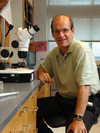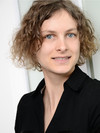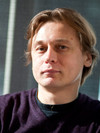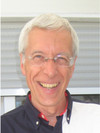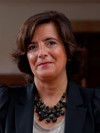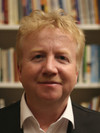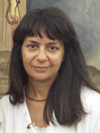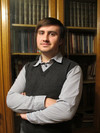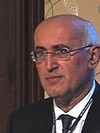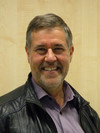Scientific Topics and Speakers
Trace Elements and Minerals:
- Epidemiology
- Analytical Methods
- Biomarkers
- Pathophysiology, Nutrition and Toxicology
- Human Health
- Aging
- Animal Health and Disease
- Health Benefits and Risks
- Environment
- Interactions of Trace Elements
Confirmed Speakers
Josiane Arnaud (France)
Title: Trace Element External Quality Assessment Schemes: Organizer and user points of view
J. Arnaud, PhD is a Clinical Biologist. She has been working in the Department of Biochemistry of the University Hospital of Grenoble, France since the eighties. Her main fields of interest are the relationships between nutrition, essential trace elements and chronic diseases and to a lesser extend diseases related to calcium metabolism. She has also a long experience in laboratory quality insurance and she has been an organizer of Trace element external quality assessment scheme since the nineties.
Elias Arnér (Sweden)
Title: The selenium dependent thioredoxin system as a target for drug therapy in cancer or oxidative stress
Professor Elias Arnér, MD PhD, is Head of the Biochemistry Division in the Department of Medical Biochemistry and Biophysics at Karolinska Institutet (KI). He received his PhD (1993) and MD (1997) as a student of an MD PhD program at KI. He studies techniques for recombinant selenoprotein synthesis in E. coli and structure-function relationships of selenoproteins, especially isoforms of thioredoxin reductase. Additional interests are to develop biotechnological applications of selenoproteins, to understand redox signaling pathways in mammalian cells, and to develop novel anticancer therapies that target selenoproteins as their mechanism of action. Arnér has published 130 articles found in PubMed, with 13,700+ citations and an h-index of 49 (Google Scholar). In 2017 he chaired the Se2017 conference that was the largest yet international conference on selenium research (www.Se2017.se).
Michael Aschner (United States)
Title: What can we learn from worms about manganese-induced neurotoxicity?
His studies address basic mechanisms in various experimental models (C. elegans, tissue culture and rodents), and they are designed to (i) increase the understanding of the genetic influences on health especially as it relates to neurological diseases; (ii) increase knowledge of the pathway involved in neurotoxicity as well as the impact of these processes on neurodegeneration; (iii) develop improved research models for environmental sciences and biology; and (iv) use environmental toxicants to understand basic mechanisms of neurobiology.
Pilar Bermejo-Barrera (Spain)
Title: Environmental impact of the metalnanoparticles and its possible impact on health
Pilar Bermejo-Barrera is a Professor of Analytical Chemistry in the University of Santiago de Compostela, Spain from 1991. She is the head of the Trace Elements, Spectroscopy and Speciation Group (GETEE), and her work focuses on trace element speciation in environmental, biological and clinical samples, trace elements bioavailability, as well as studies about metalomic and metaloproteomic profiles.
Anne-Laure Bulteau (France)
Title: Impact on heavy metal accumulation on skin
Anne-Laure Bulteau was trained as a protein biochemist and graduated from the biochemistry department at Denis-Diderot University in Paris in 2002. Since 2007 she worked for the French National Center for Scientific Research (CNRS). Her main research focuses on protein oxidation and oxidative stress. In collaboration with the group of Dirk Schaumlöffel in Pau and LVMH she is working on the effects of heavy metals on skin. Since September 2016 she joined the Institute for Functional Genomics in Lyon at Ecole Normale Superieure de Lyon where she works on skin aging.
Julia Bornhorst (Germany)
Title: Insights in trace element effects and interactions with focus on C. elegans
Her research area addresses the identification of underlying mechanisms of manganese-induced neurotoxicity in various brain cells and Caenorhabditis elegans (C. elegans) comparing cytotoxic and genotoxic effects as well as oxidative stress, DNA damage response and DNA repair studies. Moreover, a further particular interest includes trace element homeostasis and interactions especially in the context of aging.
Susan Fairweather-Tait (United Kingdom)
Title: Effects of consuming a Mediterranean-like dietary pattern on trace element intake, and iron and selenium status, in elderly men and women: results from the NU-AGE study
Her research interests include mineral requirements for optimal health, in particular iron, and micronutrient bioavailability. She is an appointed expert on the EFSA NDA Panel and has been involved in setting Dietary Reference Values for Europe, and evaluating health claims.
Vadim Gladyshev (United States)
Title: Systems biology of selenium utilization
Vadim Gladyshev is Professor of Medicine at Brigham and Women’s Hospital, Harvard Medical School, Director of the Center for Redox Medicine, and Associate Member of the Broad Institute. He has been working in the areas of selenium and redox biology. He also has a long-term interest in the mechanisms of aging and regulation of lifespan. His research uses a variety of model organisms and applies high-throughput approaches to achieve systems level understanding of selenium utilization.
Andrey R. Grabeklis (Russia)
Title: Occupational exposure to metals: issues of choosing biomarkers
The research interest of Andrey Grabeklis is effects of natural and anthropogenic environmental factors on human mineral metabolism. His investigations are devoted to how climatic conditions, landscape, local geochemical features and environmental pollution are reflected in trace element status of populations and separate cohorts of people. Particular subjects of research include the questions of detection and monitoring of low intensity exposure to toxic and potentially toxic chemical elements and estimation of its health consequences.
Hajo Haase (Germany)
Title: Measurement and physiological relevance of free zinc ions
The research area of Hajo Haase is the investigation of physiological functions of essential trace elements, in particular zinc, on the molecular level. In addition, his group is looking at these functions as potential molecular targets for the detrimental actions of chemically related toxic elements, such as Hg, Cd, and Pb. Particular areas of interest include the bioavailability of these elements, as well as identification of their influence on molecular target structures, first and foremost their impact on cellular signal transduction in adaptive and innate immunity.
Anna Kipp (Germany)
Title: Interactions of selenium with other essential trace elements
Anna Kipp is a Professor of Molecular Nutritional Physiology at the Friedrich Schiller University Jena. Her work is related to the redox-regulation of signal transduction with the focus on interventions with micronutrients, especially selenium. During the last years, her research was focused mainly on effects of a suboptimal selenium status on hepatic and intestinal physiology as well as the functionality of inflammatory cells.
Wolfgang Maret (United Kingdom)
Title: A new era of zinc biology
Wolfgang Maret, FRSC, Professor of Metallomics, King’s College London, Faculty of Life Sciences and Medicine, School of Life Course Sciences, London, UK. His work focuses on the functions of essential and non-essential chemical elements in human health and disease, and in particular, on the proteins that coordinate the control of cellular zinc and redox homeostasis.
Maria Montes-Bayon (Spain)
Title: Biomedical applications of ICP-MS: actual and remaining challenges?
Her research interests are:
a. Development of alternative quantitative strategies for determination of new biomarkers (e.g. proteins and peptides) of clinical relevance based on the use of stable isotopes and ICP-MS strategies.
b. Evaluation of new metallodrugs for their potential use in chemotherapy: a focus on cellular resistance mechanisms.
c. Biomedical aspects of nanoparticles: nanopharmaceuticals and metal debris from metallic implants.
Dirk Schaumlöffel (France)
Title: Trace element localization in cells and tissue
Dirk Schaumlöffel has been a research professor at the French National Center for Scientific Research (CNRS) since 2011. His scientific research focuses on analytic-chemical developments for essential and toxic trace elements and trace element species in biological organisms. One of his main activities includes trace element imaging in biological cells and tissue by nano secondary ion mass spectrometry (NanoSIMS).
Rosanna Squitti (Italy)
Title: Cognitive Dysfunction in neurodegenerative disorders: focus on copper
Rosanna Squitti works on trace metal dyshomeostasis linked to cognitive deterioration in neurodegenerative disorders and in particular on disturbance in the regulation of copper in humans. The speciation of the copper components in general circulation and their body distribution is of great interest along with the interplay with genetics, in particular with the ATP7B gene, major controller of copper balance in the body. Rosanna Squitti tested primarily patients with Alzheimer’s disease, Mild cognitive impairment, Parkinson’s disease, Frontotemporal Lobar dementia, Wilson’s disease, hepatic encephalopathy, Nonalcoholic fatty liver disease, psychiatric and aceruloplasminemia.
Alexey A. Tinkov (Russia)
Title: Toxic trace elements in obesity and metabolic syndrome
Research of Alexey A. Tinkov, MD, PhD is focused on the role of trace element disorders in obesity and associated disturbances. A special focus is made on the role of heavy metals and metalloids (Hg, Cd, Sn, As) including those possessing endocrine disruptor activity. Potential contribution of toxic trace element exposure into obesity-associated metabolic disturbances (insulin resistance, atherogenic dyslipidemia) is studied.
Marco Vinceti (Italy)
Title: Methodologies and uncertainties in risk assessment of trace elements: the selenium example
Marco Vinceti, MD - PhD (Public Health), is affiliated with the University of Modena and Reggio Emilia Medical School and with the Boston University School of Public Health, and is an independent expert at the European Food Safety Authority. His research activity is in nutritional and environmental epidemiology, focusing on the human health effects of selenium and heavy metals, and on the epidemiology of childhood leukemia and amyotrophic lateral sclerosis.
Willi Windisch (Germany)
Title: Responsibilities in Feeding Trace Minerals to Livestock: Impacts on Environment and Food Quality
His research is focused on:
a) Metabolism of essential trace minerals in pigs and cattle (Zn, Fe, Cu): Patters and mechanisms of homeostatic adjustments to varying dietary supply at the whole body and tissue level; identification of suitable parameters of supply status; trace mineral transfer from mother to progenies and epigenetic effects; experimental protocols to assess bioavailability of dietary trace mineral sources.
b) Effects of (un)desirable dietary compounds and feed additives on the functionality of the gastrointestinal tract of pigs and cattle



